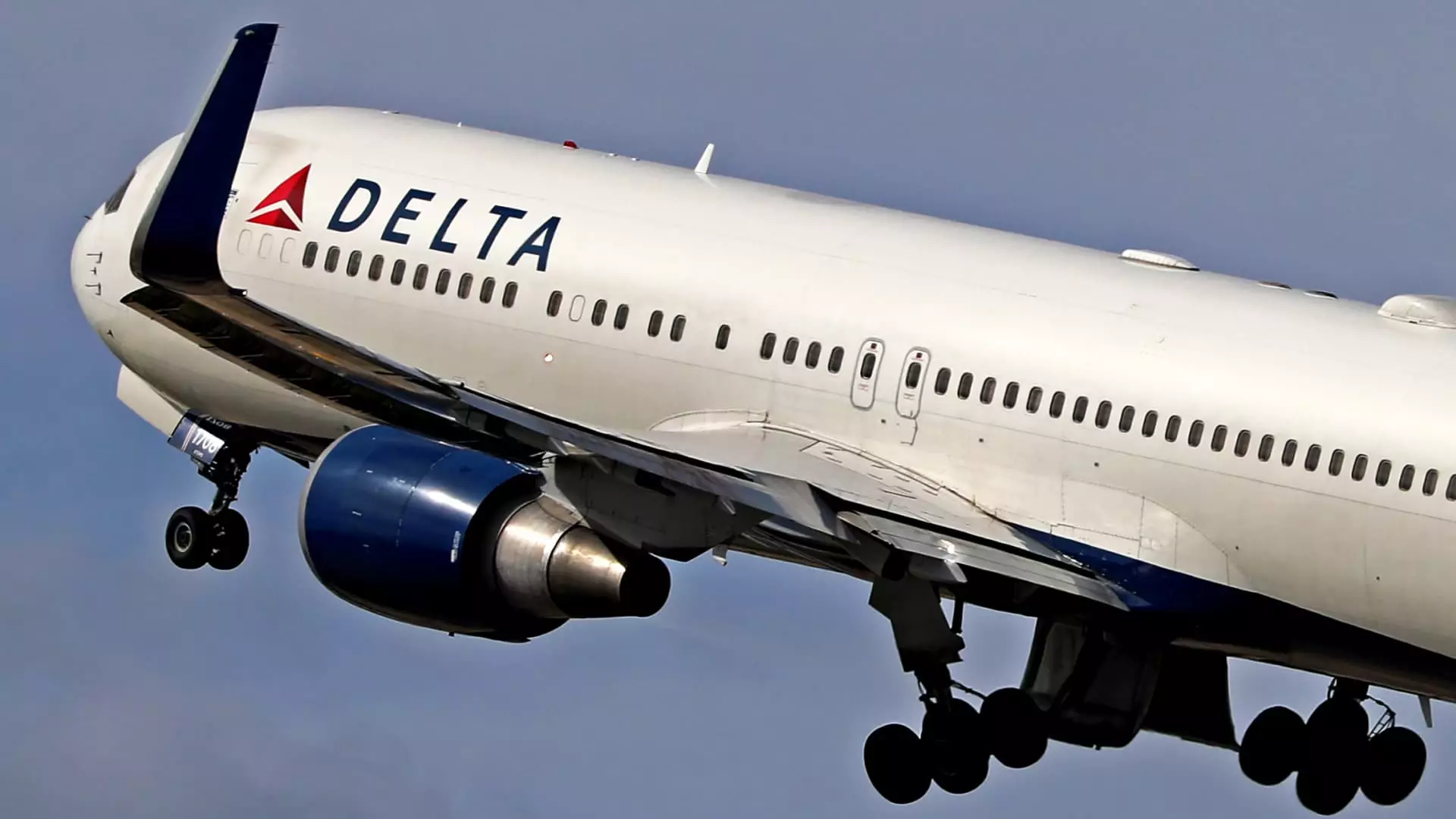The airline industry is currently navigating treacherous waters, and market sentiments are anything but optimistic. Recent reports revealed a staggering setback as airline stocks plummeted amidst ongoing fears regarding diminished travel demand. The root of this anxiety can be traced to multiple economic factors, including the impending threat of tariffs and a troubling decline in consumer confidence. Delta Air Lines, the once-gilded leader of the U.S. airline sector, witnessed its shares tumble over 2% after a downgrade from Jefferies, which significantly slashed its price target. Such drastic revisions reflect a chilling prescience about the future viability of the airline sector, raising alarm bells not only for investors but for the entire economy.
The Pressure on Major Airlines
Following Delta’s lead, American Airlines and Southwest also felt the market’s harsh impact, with declines of 2% and over 5% respectively. It’s reminiscent of a domino effect where bad news about one airline leads to a crisis of confidence affecting others. Jefferies has now targeted United Airlines as an outlier—its sole “buy” recommendation amidst a sea of downgrades for domestic carriers. However, even United faces a substantial cut in price forecasts, highlighting an industry-wide malaise.
As airline executives gather for essential discussions, the prevailing sentiment is grim. At a recent JPMorgan industry conference, attention was drawn to the softening of domestic travel—a pillar of the travel industry’s revenue. The revelations regarding household spending trends are equally disheartening. Despite an overall uptick in credit and debit card expenditures, a sharp 7.2% decrease in airline spending indicates more than just seasonality or bad weather; it reflects a larger existential fear plaguing consumers in today’s economic climate.
A Deeper Examination of Consumer Behavior
The nuanced analysis presented by the Bank of America Institute is telling; higher airline costs coupled with wavering consumer confidence might deter prospective travelers from booking flights altogether. While factors like inclement weather and an unusually late Easter this year play into the dip, they only serve as temporary cover for deeper systemic issues that could threaten the very fabric of the airline industry. This situation poses an important question: how long can airlines sustain their operations with diminishing passenger revenue and faltering demand?
The luxury segments, such as first-class travel, might yield revenue gains, and Delta’s partnership with American Express appears to buffer some losses. However, focusing on affluent travelers can only offer limited salvation against falling demand from the masses, who are more price-sensitive in an era of economic uncertainty. When times are tough, cutting discretionary spending becomes an almost instinctual consumer response.
The Broader Implications
Beyond immediate financial losses, the airline sector’s current woes could have profound ripple effects across various facets of the economy. If airlines continue to struggle, it raises further concerns about job security within the industry, potential bankruptcies, and the long-term viability of travel as a leisure activity. There exists a critical interplay between consumer behavior and economic health, and the current trajectory suggests a downturn that extends far beyond just the airline industry. As airlines report their earnings next week, the numbers will serve as a crucial barometer for broader economic dynamics. With all the turbulence brewing, it’s fair to wonder: is this the beginning of a significant decline in an industry that once soared high?


Leave a Reply